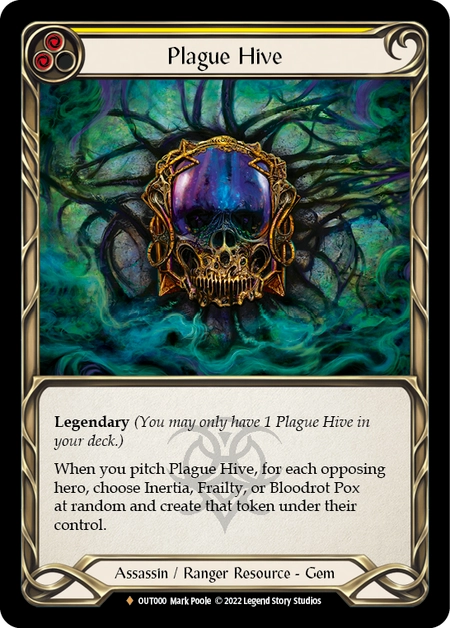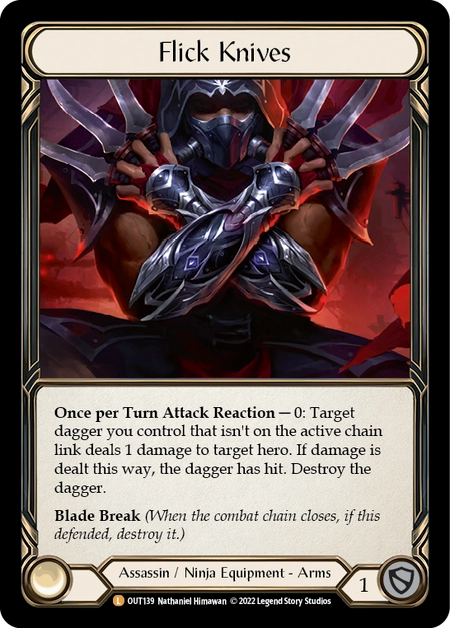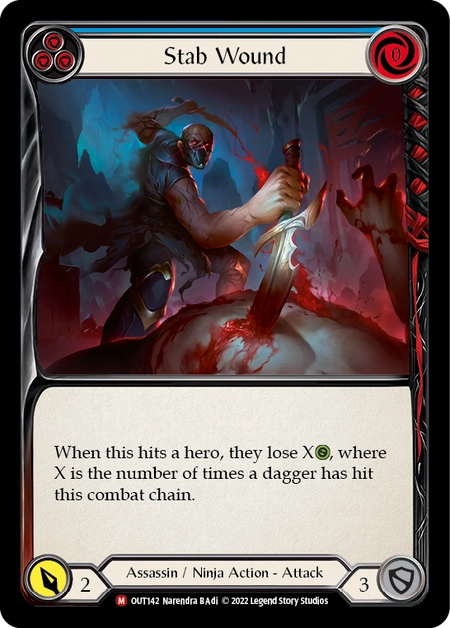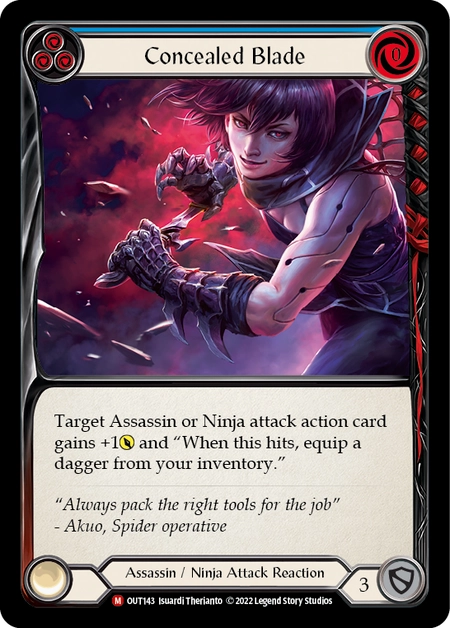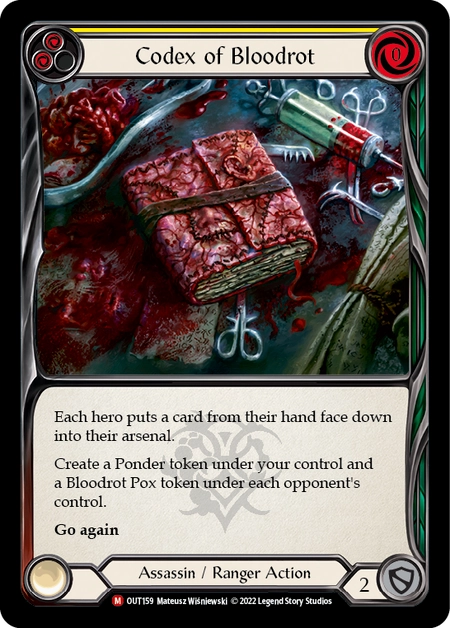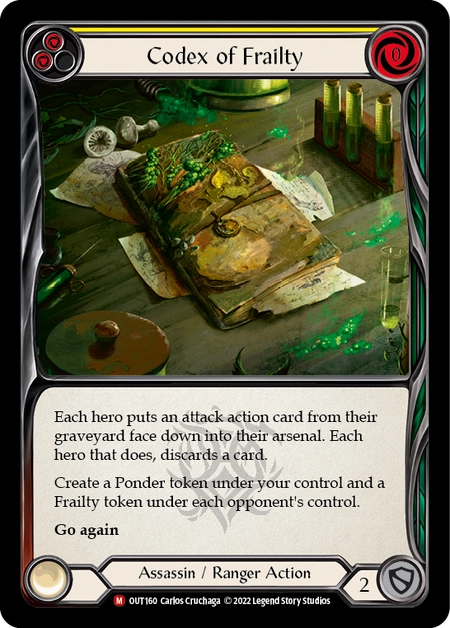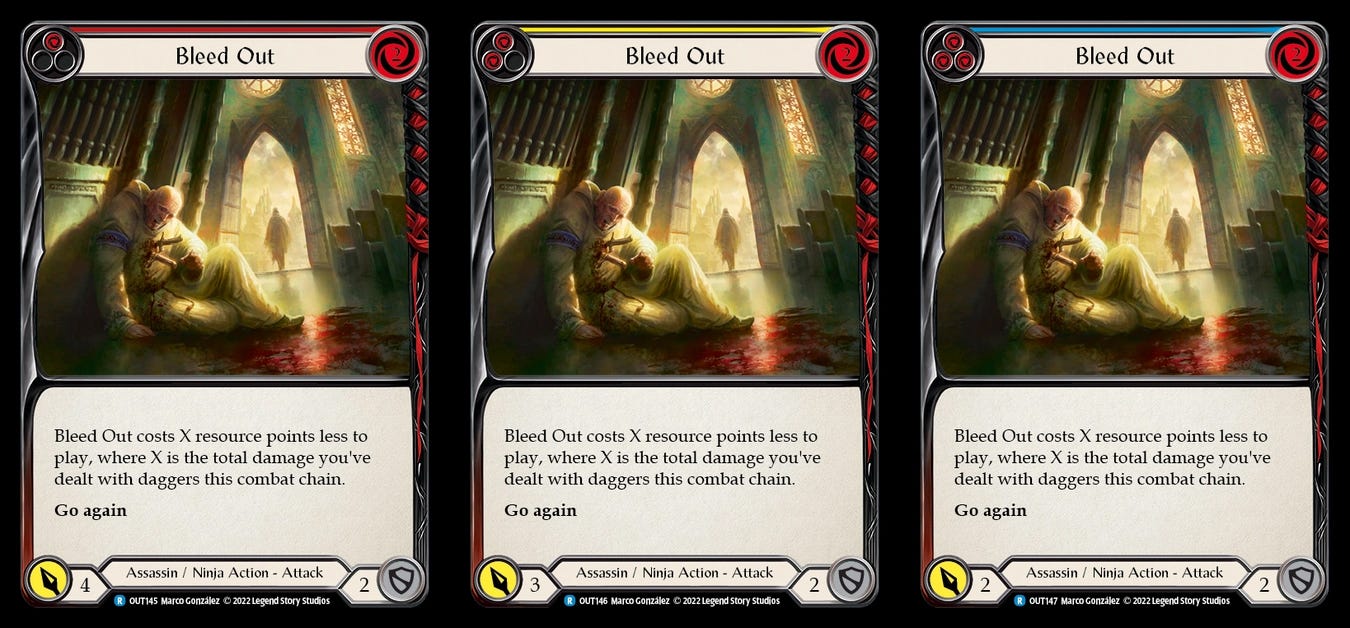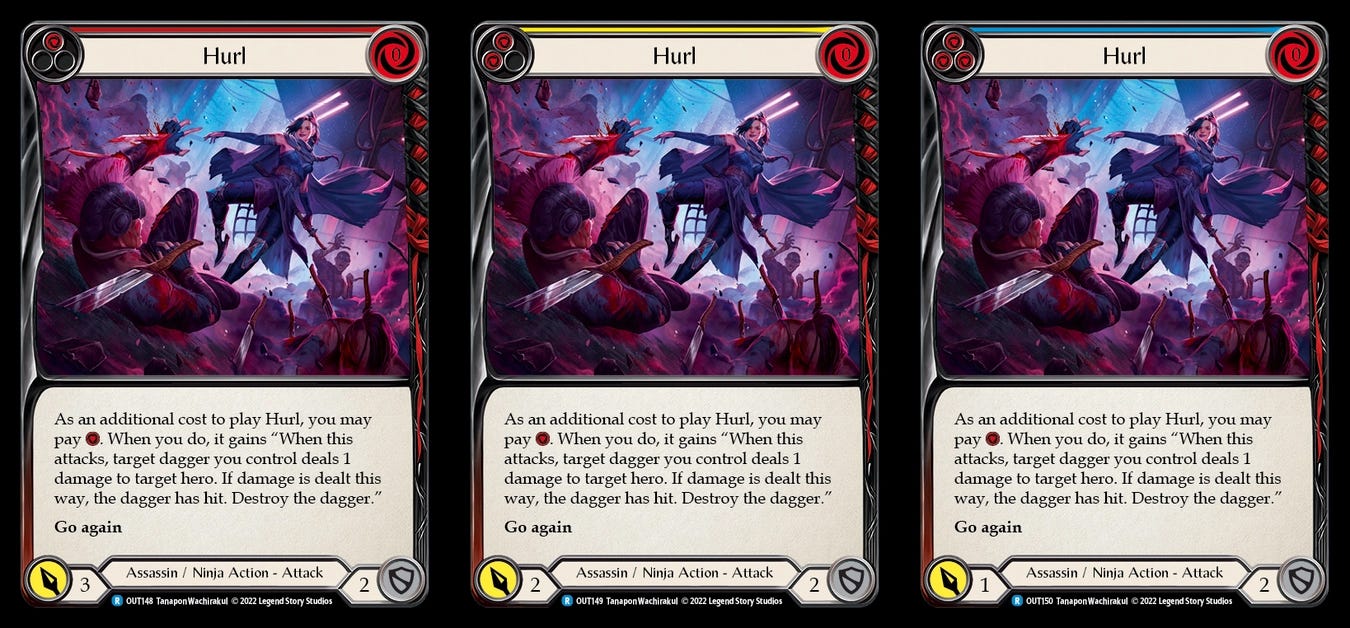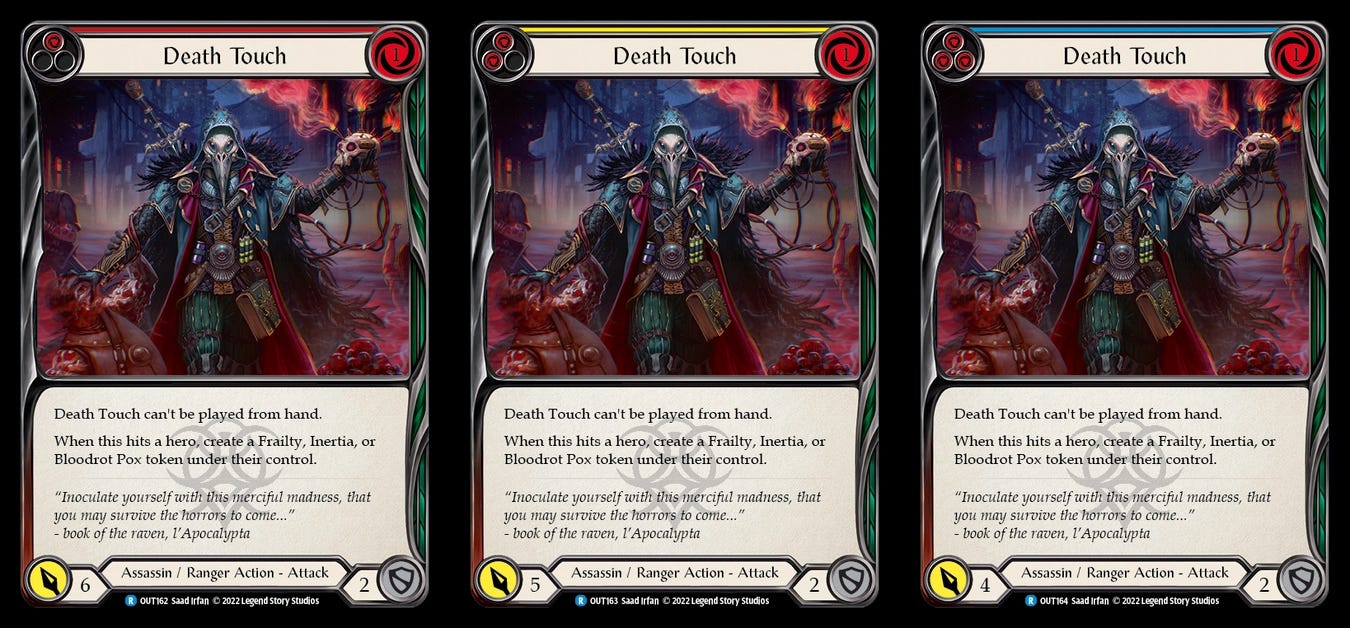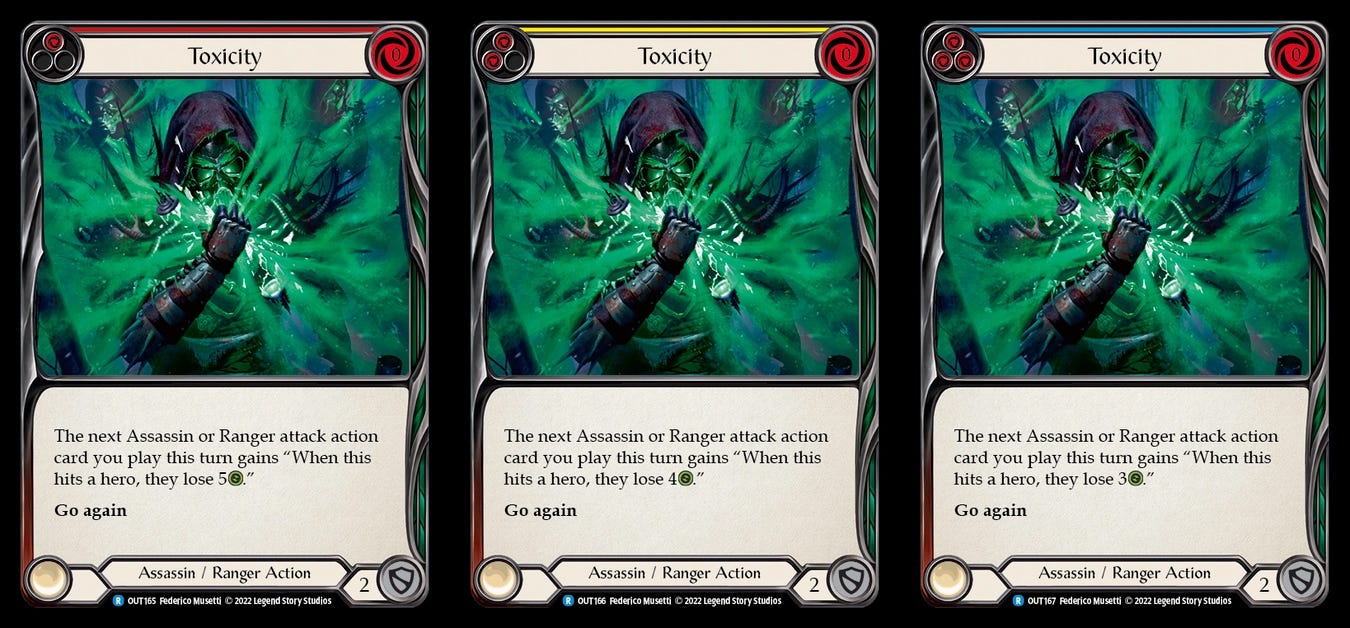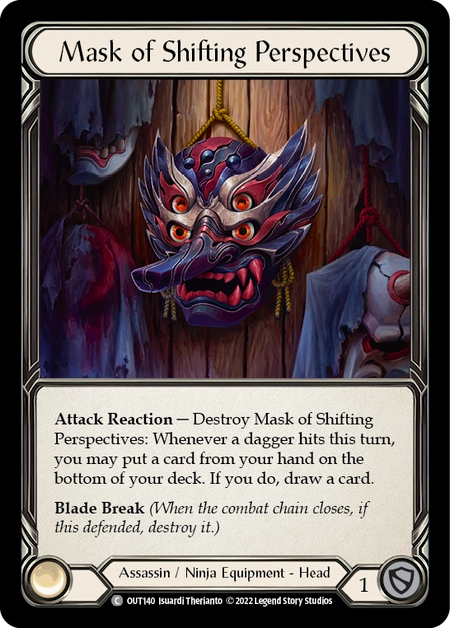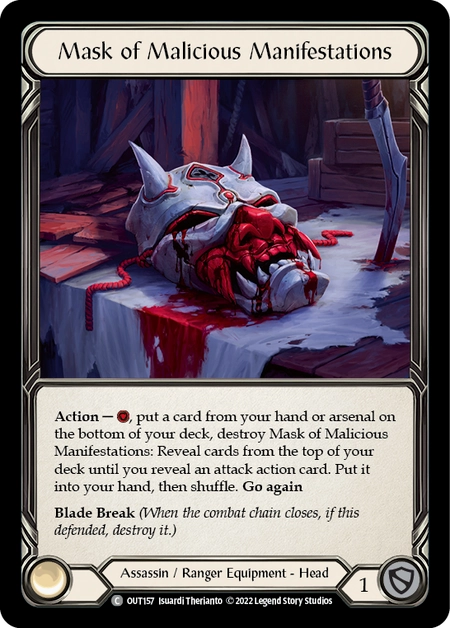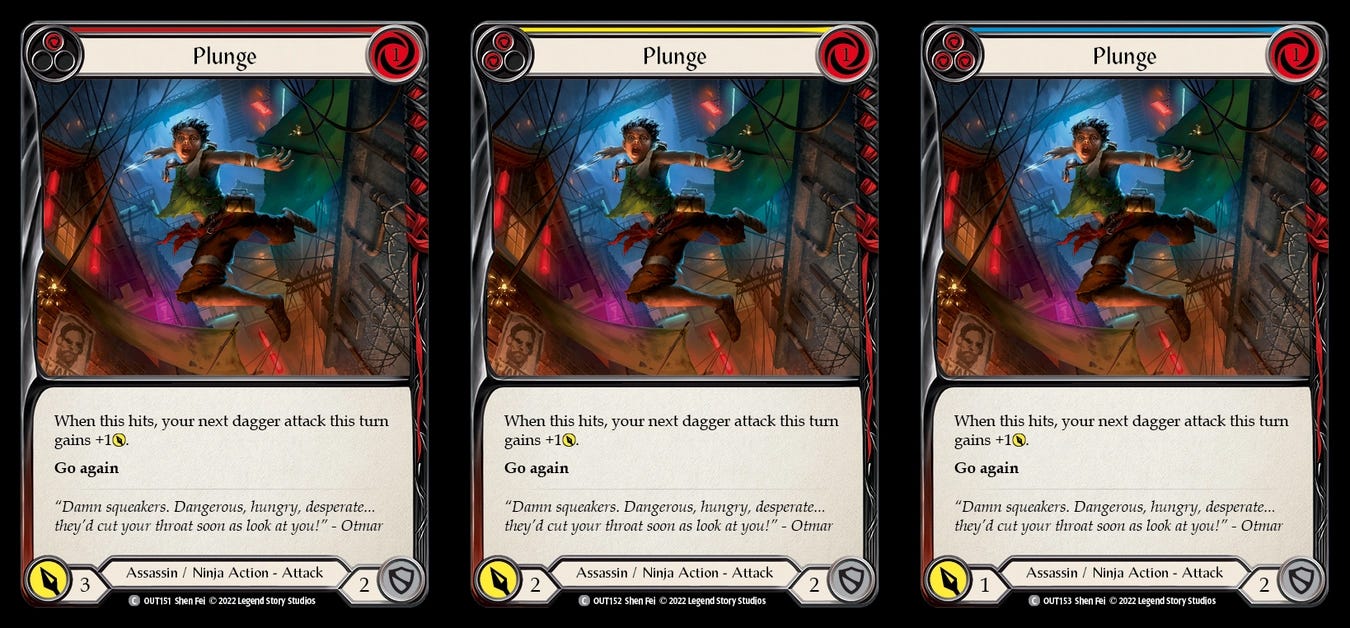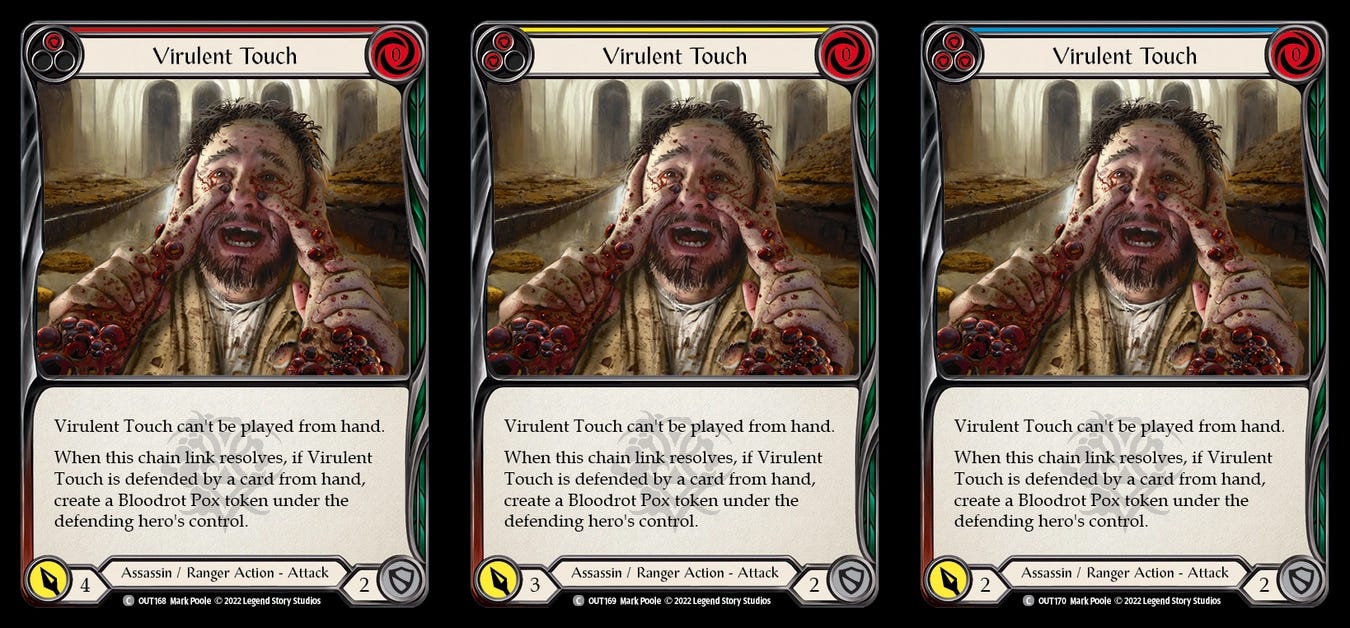Outsiders Limited Set Review: Hybrid
Expertly navigate drafts with the power of Hybrid cards and have the 3-0 deck in your pod!
Two is better than One
Staying open in draft is not an unfamiliar concept. Hybrid cards make staying open in draft a lot easier. However, not all Hybrid cards are made equal. Understanding which hybrid cards work better with which heroes is key in this draft format.
Limited Ranking System
S - Tier
This tier belongs to the crème de la crème of cards in draft. Crown of Providence, Fyendal’s Fighting Spirit (R/Y) and Death Touch (R) are some examples of S-Tier cards.
A - Tier
First-pickable, powerful cards that help you stay open. Brothers in Arms (R), Blaze Headlong and Humble (R) are some examples of A-Tier cards.
B - Tier
Usually serves as a signal when a class or hero is open in your seat. Key role-players in decks. Aether Icevein (R), Lava Burst and Infect (R) are some examples of B-Tier cards.
C - Tier
The ‘meat’ of most draft decks. Cards that are not particularly powerful but synergizes well with what your deck wants to do. Brand with Cinderclaw (R), Frosting (R/B) and Isolate (R/Y/B) are some examples of C-Tier cards.
D - Tier
Niche cards that either fill very specific roles, or just downright filler. Often seen late into draft picks. Isenhowl Weathervane (R/Y/B), Transmorgrify (R/Y/B) and Brush Off (Y/B) are some examples of D-Tier cards.
E - Tier
Not much is needed to explain in this Tier of cards. These cards were probably designed with other formats in mind. Fog Down, Liquify and Visit the Floating Dojo are some examples of E-Tier cards.
F(rightmare) - Tier
This tier solely exists for Frightmare. Yay.
Fabled
Plague Hive - S
It is hard to evaluate a card which I have never played in draft, but all I know is that under normal circumstances, you’ll be taking this card first pick regardless for its monetary value. Generating a random disease token while providing 2 resources seems quite neat in most Assassin or Ranger decks and will most likely make up for the lack of block value the card has. Even if this card plays out to be only an A-tier in draft, it is S-tier in terms of its overall value.
Legendary
Flick Knives - S
Unlike Redback Shroud and Trench of Sunken Treasure, Flick Knives being a Hybrid card provides flexibility in draft, making this card an easy first pick. Damage dealt from the activated ability of Flick Knives is also not easy to prevent, basically reminding your opponents that they cannot fall below 2 or less life. The 1 block from this equipment is a bonus as well, making this card everything you want in a first pick.
Majestic
Stab Wound - C
This unsuspecting 0 for 2 is good if you happen to be drafting Benji, but falls short when played with the other three heroes in draft. It is worth pointing out that it is still a blue 0 cost 3 block attack action, so its not the worst in Katsu, and there is a combo with Stab Wound if you happen to draft Short and Sharp (Kodachi > Kodachi > Stab Wound + Short and Sharp). It definitely does not feel like a payoff card you would want for Assassin decks.
Concealed Blade - C+
This card is great once you’ve committed to drafting either Assassin or Ninja. It allows you to punish opponents that don’t over block, allowing you to sneak in a key on-hit with the small upside of equipping a dagger. In ninja, this card is a 0 cost blue 3 block and can be used to push past blocks to trigger Katsu or Benji’s effect, making Concealed Blade the perfect role player in ninja decks.
Knives Out - C+
Similar to Concealed Blade, Knives Out is another 0 cost 3 block attack reaction, making it a premium blocking card against Assassins due to Spider’s Bite not affecting the block value of Reaction cards. The uses of this card is evident in ninja, and just like Stab Wound, this card has negligible payoff in Assassin decks. As such, it feels more like a Ninja majestic than a Hybrid majestic. Probably a B- if you’re drafting Ninja and a C+ when you’re still open.
Codex of Bloodrot - C+
This codex has the weakest effect of the three, most likely due to the power of the Bloodrot Pox token it creates. Still, the codex allows rangers to fire arrows without needing to use Barbed Castaway, or can create a way to play cards like Death Touch and Virulent Touch. This card is also decent in Azalea, as it offers a way to get arrows into the arsenal to get the aim counter from Barbed Castaway or for Azalea’s ability.
Codex of Frailty - S+
Busted in Classic Constructed, busted in Limited. This card just does so much. It recurs your best attack while occasionally punishing opponents who do not have an arsenal. The tempo this card grants is exceptional, as the Frailty token it creates is also relevant against all classes in Limited.
Codex of Inertia - C
This is a tough one to rate. I haven’t seen it being played much in limited, and its effect is only mediocre. The overall effect you get from this codex is more or less random, and can sometimes be more beneficial to your opponent. As such, I’m not too optimistic on this codex being as strong as Codex of Frailty.
Rare
Bleed Out - (C/D-/D)
Cards that rely on the opponent’s actions tend to be rated lower than those that do not. Bleed Out is one example of such a card. The power level of this card varies on a scale. As such, it is hard to give an accurate evaluation. Generally, this card is good in ninja, as Kodachis aren’t really worth blocking with a card. In Assassin, you run the risk of running into clunky hands if you draw this card without a blue. Furthermore, this card has a more aggressive disposition given its block value of 2. As such, I cannot say this card is worth a first pick, but the red one is decent in Arakni and Ninja decks.
Hurl - (C+/D/D)
This is a much better card compared to Bleed Out. It is always a 0 for 3 with go again, with the added option of adding a point of damage at the cost of a resource and a dagger. Hurl is probably most effective in Arakni and Ninja, but I think there are better first-picks to stay open on. I’d pick this card early if I have have to hedge into a class and read that Ninja is open or if I have drafted some Arakni cards already.
Death Touch - (S/A-/B+)
An experienced Flesh and Blood player probably won’t need this write up to explain why Death Touch red is a great card and an excellent first pick. A 1 for 6 with an on hit that creates a token of your choice swings the tempo of the game firmly in your favour. Even the yellow one as a 1 for 5 is strong. Death Touch synergizes really well with Uzuri due to her ability to “cheat” this card out (using her attack reaction ability does not count as playing the card) and Riptide, since you can play a non attack from hand and use his triggered ability to put Death Touch into your arsenal. In Arakni, it can also be very strong if you are able to arsenal it and use it as a chain ender (something like: Spider’s Bite > Infect > Death Touch).
Toxicity - (D/D/D)
The main problem with Toxicity is that it doesn’t make your next attack harder to block; the power of the attack remains the same, so even if the attack value comes in breakpoints, the opponent will just block with 2-3 cards and call it a day. The only place this card might see play is probably in Azalea, since she is able to give dominate to her arrows, and pairing this with a dominated arrow attack can be lethal in the late game.
Common
Mask of Shifting Perspectives - (C)
In my experience of drafting Outsiders, I actually have not seen this equipment being used for its attack reaction. It is mostly used to cover breakpoints, making it practically an Ironrot Helm. You can always pick this equipment late in packs as there is a high chance of it tabling. It is always overshadowed by “Mask of Many Faces” if you’re playing ninja, so its usually filler equipment for Assassins.
Blade Cuff - (C+)
While I will never say no to a pair of Ironrot Gauntlets in draft, Blade Cuff actually has quite a few uses in this format. With the existence of Frailty tokens, this card can make opponents think twice about walking into Kodachi Lock range, since you can always activate Blade Cuff to negate the -1 power from Frailty in the late game. It also gives ninjas slightly more reach towards the endgame. While the effect is slightly less relevant in Assassin since Spider’s Bite costs 2 resources, it pulls its weight by covering breakpoints when necessary.
Mask of Malicious Manifestations - (C)
If the name of this card hasn’t got you out of breath, reading the rest of its effect certainly will. In short, this Mask can be used to fix clunky hands or replace a card stuck in arsenal for the cost of just 1 resource. This effect is really essential in fixing awkward ranger hands. In Azalea, not having an arrow in hand while also having no cards in arsenal is really punishing, and in Riptide, getting a card without go again stuck in your arsenal is really bad when you have a 3-4 card hand. With Mask, you can solve these issues! In the case of Assassins, you might need to use the Mask’s ability if you happen to land yourself a hand with no attacks, although it is rare.
Toxic Tips - (C+)
Basically a “Build Your Own Death Touch” for the cost of 1 resource, Toxic Tips is really versatile in both Assassin and Ranger. It is probably one of the best common equipments in the set, so don’t be afraid to pick them up early if you have a feeling that either of those classes are open.
Plunge - (C/C/D)
Plunge is a pretty good filler card for more aggressive decks, and the yellow one is quite good in Benji. Its honestly not a bad pickup in the middle of packs, especially if your draft is leaning more towards Arakni or Benji.
Short and Sharp - (C/D/E)
The pseudo Razor Reflex of the format, Short and Sharp turns yellow Assassin attacks into 5 power, pushing its on hits through a single card block. While not exactly a key card in most decks, Short and Sharp red fills the role of Razor’s Edge in Arakni, and can be used to push the last few points of damage for lethal in Benji and Katsu.
Virulent Touch - (B-/D/C-)
Having the restriction of “can’t be played from hand” should indicate the power level of this card. Virulent Touch puts your opponent in tough blocking situations where they’re taking damage most of the time. This card has great synergies with Riptide, since its restriction can be worked around with his hero ability, and also with Uzuri, since she can swap an attacking stealth card at reaction speed with Virulent Touch.
Bloodrot/Frailty/Inertia Trap - (C/C+/C+)
This cycle of Hybrid common traps have very interesting dynamics with the disease token they create. Bloodrot Pox, being the strongest, has the hardest condition to fulfill for its effect (unless you’re playing against Uzuri). Frailty is great into mostly Ninjas and Assassins, decent against Riptide if they have Falcon Wings and Ravenous Rabbles, making it quite easy to trigger its effect, while Inertia is probably the easiest to trigger. Giving an Inertia token on the opponent’s turn where they least expect it is probably where Inertia is the strongest. Ending turns with a pumped attack while leaving a card in hand that was planned to be put in the arsenal is quite a common play pattern in this format, so Inertia Trap disrupts that line of play. In the end, I think the three traps are fairly decent if your goal is staying open early in draft.
Wrapping Up
Outsiders draft packs will always have at least 1 common Hybrid card in them, making it easy to stay open early in the draft. Hybrid cards are also a new and welcome addition to Flesh and Blood, as it implements more depth into the game, both draft and gameplay wise.
While not all Hybrid cards are the same for the heroes that can play them, they offer a ton of flexibility should you choose to pivot towards those heroes later in the draft. Keep that in mind when drafting and you should emerge with a decent deck capable of bagging the 3-0 record in the pod!
Read the rest of the Reviews here:




